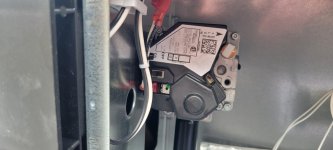Your expert should be able to give you a technical analysis of the gas supply with things like pressures and pressure drop estimates for everything.Inadequate gas supply. Piping too small.
This last is what he thinks is the problem. Back at the house, there's a small-diameter pipe connecting the "house" stuff to the pool stuff.
Also - the earthquake valve is too small. If that's true, I have a bone to pick with my pool builder. If their inadequate installation causes
a 20-year heater to last only 2-3 years, I think they owe me a fix.
Can you show all gas supply components including things like Meter, Regulators, Piping etc. with all model numbers, sizes, lengths etc?











